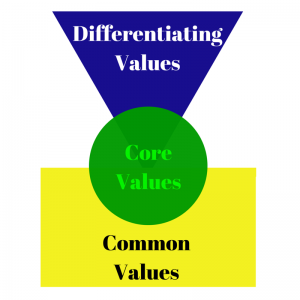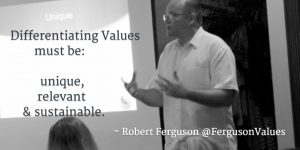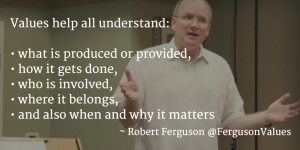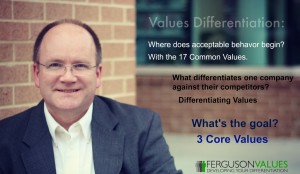Integrity. A dilemma between Ethics and Core Values?
Integrity is a hot topic. Over the past decade, the Integrity of business leaders has being challenged more than ever. With the wide array of scandals and collapse of numerous businesses that were once considered too big to fall – from WorldCom and Enron in 2001-2002, to numerous banks, brokerage firms, and insurance companies in 2008-2009 – one could wonder if there are any organizations safe from the grips of moral dilemma. Are there any business leaders left that can truly claim to have Integrity? And how does Integrity relate to an organization’s core values and brand building efforts?
First let’s look at some definitions of Integrity:
- The quality of being honest and morally upright; also the state of being whole or unified (Oxford).
- Strict adherence to a moral code, reflected in transparent honesty and complete harmony in what one thinks, says, and does (BusinessDictionary.com).
- ·The quality or condition of being complete – pure (Wiktionary).
- ·Consistency of actions, values, methods, measures, principles, expectations and outcome – not necessarily in every minute detail, but holistically (Wikipedia).
The key word here that relates to core values that build brands is consistency. Building a brand comes from building trust. And building trust comes from being consistent. This is true regardless of the term an organization might use to describe a core value such as Integrity, including: honesty, unity, wholeness, purity, sincerity, virtue, decency, honor, reliability, or authenticity.
Not surprisingly, in business Integrity is most often associated with the concept of morals and ethics. Yes, it’s important to provide moral clarity for all stakeholders around what is considered acceptable versus not acceptable. Establishing a set of principles provides clear direction for everyone. However, it is not always so easy.
Sometimes, the concept of Integrity can seem obvious. Stealing or lying is wrong. But at other times it can appear very confusing. Is paying for a prospective customer to join you at a relevant conference held at a fancy resort bordering on bribery? The Stanford Encyclopedia of Philosophy makes an interesting case that Integrity is often considered to be synonymous with being moral, and yet at times a person with integrity might act immorally. In other words, a person’s Integrity is not questioned even though that person may hold what is perceived as mistaken moral views. It’s a matter of ethics.
Is there a difference between personal ethics and business ethics? John Maxwell makes a clear statement and response to this question with his book “There is no such thing as Business Ethics” (2003). In this book, Maxwell makes the case that the ‘Golden Rule’ – do unto others as you would have them do unto you – is the key guiding principle. And this is universally true from a moral perspective. But is this enough to create a unique, sustainable brand? Is this all we need to fulfill an organization’s mission?
Marketers know that to build a powerful brand it’s important to have a set of attributes – or values – that clearly articulate the unique positioning and key differentiators for an organization’s products and services. Establishing a well-defined set of values provides clear direction to all stakeholders around what is produced/provided, how it gets done, who is involved, where it belongs, and when and why it matters.
Many businesses have a stated core value of ‘Integrity.’ That’s wonderful, providing they live by it. But if every business listed only Integrity as their core guiding principle, what would be the unique differentiator between competing firms? To build a unique and sustainable brand, there must be other unique values. That’s the focus of Values-Based Marketing.
So how to solve the Ethics-Values dilemma around Integrity, that builds brands? Consider the following: Integrity: behave in a consistent manner that reflects your unique core values, even if no one is watching
Note: This post originally published for Idea Exchange.







